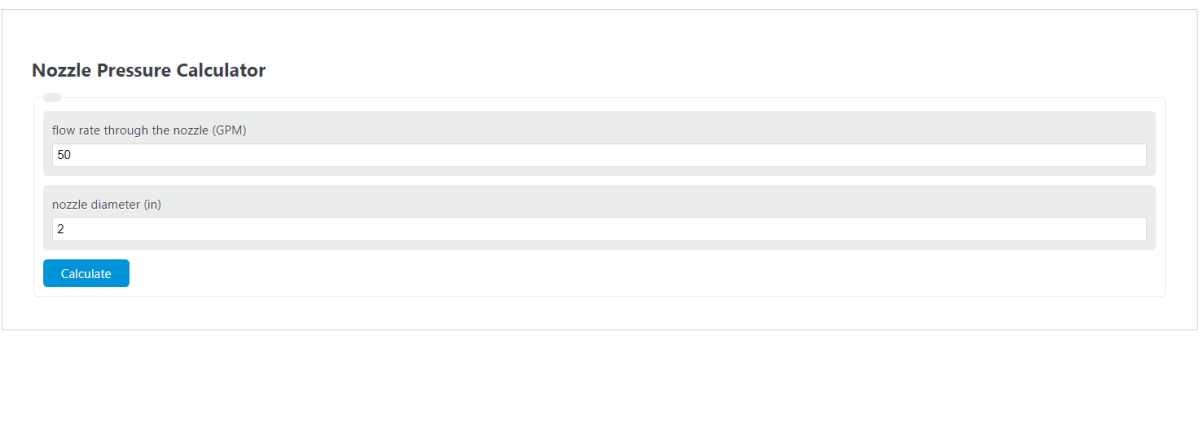Enter the flow rate through the nozzle (GPM) and the nozzle diameter (in) into the calculator to determine the Nozzle Pressure.
- All Pressure Calculators
- Nozzle Velocity Calculator
- Nozzle Reaction Force Calculator
- Density to Pressure Calculator
Nozzle Pressure Formula
The following formula is used to calculate the Nozzle Pressure.
Pnozzle = [FR/(29.71*D^2)]^2
- Where Pnozzle is the Nozzle Pressure (psi)
- FR is the flow rate through the nozzle (GPM)
- D is the nozzle diameter (in)
To calculate the nozzle pressure, divide the flow rate by 29.71 times the diameter squared, then square this result.
How to Calculate Nozzle Pressure?
The following two example problems outline how to calculate the Nozzle Pressure.
Example Problem #1:
- First, determine the flow rate through the nozzle (GPM). In this example, the flow rate through the nozzle (GPM) is given as 50.
- Next, determine the nozzle diameter (in). For this problem, the nozzle diameter (in) is given as 2.
- Finally, calculate the Nozzle Pressure using the equation above:
Pnozzle = [FR/(29.71*D^2)]^2
Inserting the values from above and solving the equation:
Pnozzle = [50/(29.71*2^2)]^2 = .177 (psi)
FAQ
What factors affect nozzle pressure?
Nozzle pressure is primarily affected by the flow rate through the nozzle and the diameter of the nozzle. Other factors that can influence nozzle pressure include the viscosity of the fluid being sprayed, the type of nozzle, and any obstructions or wear within the nozzle itself.
How can I increase the pressure of my nozzle?
To increase the nozzle pressure, you can either decrease the diameter of the nozzle or increase the flow rate through the nozzle. However, it’s important to consider the specifications of your equipment to avoid damage or inefficient operation.
Why is it important to calculate nozzle pressure accurately?
Accurately calculating nozzle pressure is crucial for ensuring the efficient operation of spraying systems in various applications, such as irrigation, firefighting, and industrial cleaning. Proper nozzle pressure helps in achieving the desired spray coverage, droplet size, and velocity, which are important for the effectiveness and efficiency of the spraying process.
